Reheating Pizza in Oven: Restore Leftovers Perfectly
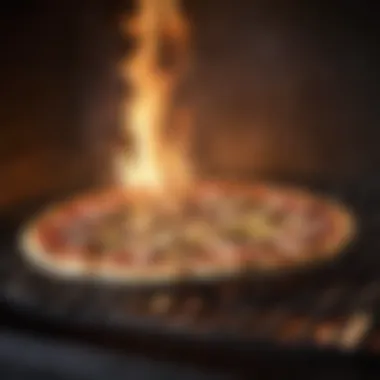
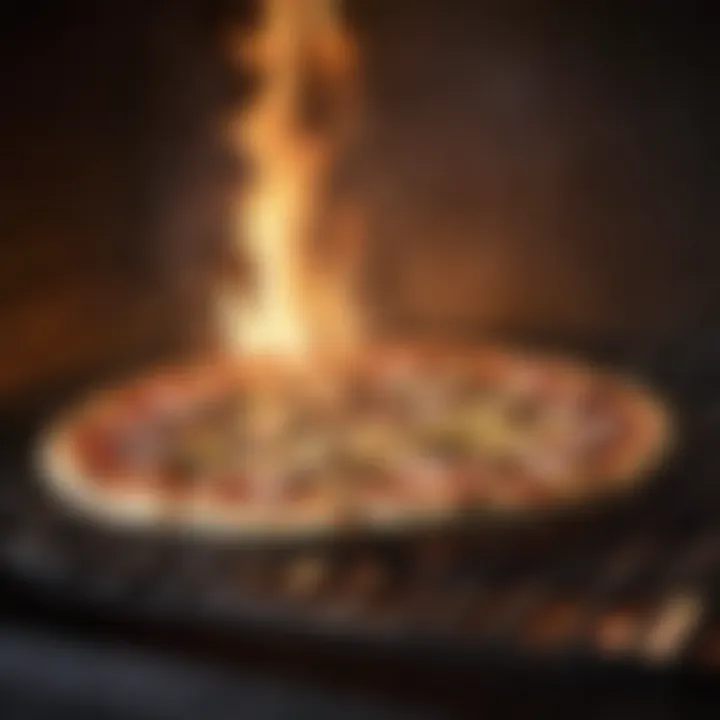
Intro
Reheating pizza isn’t just a mundane task; it’s an art that can transform leftover slices into a delightful experience. Many might toss their pizza into the microwave, hoping for a warm treat. However, when the goal is to restore flavor and texture, the oven stands out as the true champion in the reheating realm. This guide takes you through the nuances of properly reviving your pizza, ensuring every bite sparkles with its original charm.
In this guide, we will delve into the best practices for oven reheating. Covering aspects from optimal temperatures to additional tips for maximizing flavor, we aim to elevate your pizza experience from simple leftovers to gourmet delights.
Get ready to discover how to respect the integrity of every topping, crust, and sauce in the process.
Prelude to Reheating Pizza
Reheating pizza might seem like a straightforward task, yet it harbors complexities that can profoundly affect the outcome. The significance of this topic lies in the subtle science of revitalizing a culinary creation that, when done right, can bring comfort and joy. Leftovers often carry memories of shared meals and late-night indulgences. Understanding how to bring that experience back to life turns a regular reheating session into a delightful culinary reunion.
In today’s fast-paced world, enjoying a slice of pizza, even a day old, holds a special place. It takes skill to restore not just the flavors, but also the textures that made that pizza memorable in the first place. This guide will explore the need for reheating, what happens during the process, and how one can achieve pizza perfection.
Understanding the Need for Reheating
It’s common for pizza to become a leftover staple. After a gathering or simply a busy weeknight, those slices often end up in the fridge, waiting for their chance to shine again. Yet, they can sometimes resemble a shadow of their former glory—soggy crusts or cold cheese can turn enthusiasm into disappointment.
Reheating pizza serves several purposes:
- Texture Restoration: Aiming to regain that satisfying crunch of a well-baked crust that has been lost in the cold storage.
- Flavor Revival: The rich taste of cheese and toppings can dull; warming helps bring those flavors back to life.
- Convenience: For many, it's a quick way to enjoy a meal without the effort of cooking from scratch, turning a busy day around quickly.
So, understanding the nuances of pizza reheating is crucial for anyone who wishes to savor every bite, transforming leftover misery into culinary delight.
Why the Oven is a Preferred Method
When faced with the choice of reheating pizza, several methods present themselves: microwave, stovetop, or oven. However, the oven is often touted as the best bet for bringing leftover pizza back to life.
Some reasons why the oven takes the crown:
- Even Heating: Ovens distribute heat more uniformly, which helps in maintaining the integrity of both crust and toppings. Each slice can bask in that warmth equally, preventing any cold spots.
- Texture Focus: The oven bestows a crispier crust—a hallmark of great pizza. The dry heat from the oven acts on the pizza to draw out moisture, leaving your crust crispy while ensuring the toppings remain warm.
- Space: For those with multiple slices to reheat, the oven provides ample space to warm them up in one go. Unlike the stovetop which can only manage a few at a time, an oven can handle an entire pie comfortably.
By opting for the oven method, one elevates leftover pizza from the dull stage into something fancier, resembling the fresh pie right out of the pizza shop.
"Reheating pizza isn’t merely about warmth; it’s a quest for rejuvenation—magic can happen on that baking sheet!"
This article, specifically focusing on oven reheating, will unravel the methods to perfect that reheated slice, enabling readers to experience leftovers with renewed enthusiasm.
The Chemistry of Heating
Understanding the chemistry behind reheating pizza is not just a detail—it's the backbone of achieving that flavorful bite reminiscent of its freshly made self. When you apply heat to pizza, a series of chemical reactions occur that can define or destroy the quality of the leftover slice. These reactions impact everything from the texture of the crust to the melty perfection of the cheese, translating directly into the eating experience.
Within this realm of heating, one of the most notable changes is the Maillard reaction. This is essentially the golden bond that forms when proteins and sugars react under heat, giving food that irresistible browned flavor. When reheating pizza, how you apply heat can dramatically change whether you end up with a soggy crust or a delectably crunchy base. The right technique unleashes that savory goodness that makes pizza a beloved dish around the world.
The common misconception that all heating methods achieve similar results overlooks the intricate science behind the flavors and textures we adore. When we dive deeper into the specifics of how heat interacts with various pizza ingredients, it becomes clear how vital it is to choose the right approach for reheating.
How Heat Affects Pizza Ingredients
Pizza is a delightful concoction of various components: dough, sauce, cheese, and toppings. Each of these elements reacts uniquely to heat. For instance, the crust, made primarily from flour, water, and yeast, undergoes significant changes when heated. The starches in the flour gelatinize, giving the crust a certain firmness; however, if the heat is too aggressive, it can dry out and become hard as a rock.


On the other hand, cheese, which is full of fats and proteins, melts and browns beautifully at the right temperatures. When you heat cheese, it releases some of its oils, which can enhance flavor. But beware! Overheating can lead to pooling of excess oils, rendering it unappetizing and greasy.
The toppings, too, have a range of reactions. Vegetables might lose their crispness and become limp, while meats can dry out if exposed too long to direct heat. Finding the balance in reheating allows all these components to shine together, although it requires a careful eye and attention to detail.
The Balance Between Temperature and Texture
Finding the sweet spot between temperature and texture while reheating pizza is where the science meets art. Too low and the pizza might warm up unevenly, leaving you with cold spots, or worse, diminishing flavors. Too high and well, let's just say no one enjoys a burnt pizza.
Typically, a temperature around 375°F works wonders—it gently warms the crust, allows the cheese to melt evenly, and revives the toppings without turning them tough. Keeping an eye on your pizza while it heats is crucial. You want it to look inviting and fresh, with that slight sheen on the cheese indicating it's reached melting point without crossing into the abyss of charred disappointment.
In essence, reheating pizza is about coaxing the ingredients back into their prime state with a finesse that blends heat and timing. This balance not only preserves the original quality of the pizza but can enhance the flavors, turning a simple leftover into a culinary experience that brings satisfaction with every bite.
"Heating pizza isn't just a process—it's an art form, merging chemistry with creativity."
By embracing these scientific principles, you can ensure that each slice is treated with the respect it deserves. In this delicate dance of heat and texture, the goal remains straightforward: to restore your leftover pizza to a state where it is not only edible but downright enjoyable.
Optimal Heating Techniques
When it comes to reheating pizza, many people might just toss it in the oven and hope for the best. However, Optimal Heating Techniques are where the magic truly happens. This section delves into specific methods that can turn soggy leftovers into a canvas of flavor and texture, preserving that pizza goodness we all crave. Mastering these techniques isn’t just about reheating; it’s an art form that enhances the overall dining experience.
Preheating the Oven
Preheating the oven is, without a doubt, one of the cornerstones of effective reheating. It may seem like a minor step, but jumping over this phase could lead to uneven heating, where the crust becomes chewy and toppings turn to a weird mush.
When the oven reaches the right temperature before you toss in your pizza, you’re allowing the heat to distribute evenly. Most expert chefs will advise preheating to 375°F. At this temperature, you can effectively bring that crust back to life while keeping the toppings warm but not dried out. Some might think, "Isn't it okay to just pop it in?" Sure, you can, but why settle for mediocre pizza? Preheating ensures that every bite is as delightful as the first.
Direct Baking on a Rack vs. Tray
This is where the pizza purists might raise their eyebrows. Should you go for direct baking on a rack or opt for a tray? The answer lies in your desired results.
- Direct Baking on a Rack: Baking directly on the oven rack allows hot air to circulate freely around the pizza. This method results in a perfectly crispy crust that many people aspire for. The potential downside? Cheese and toppings might fall off if you're not careful.
- Using a Tray: Conversely, placing your pizza on a tray is a safer bet if you have particularly messy toppings. While it can lead to a slightly less crispy crust, it does catch all those rogue bits that might fall off.
So, if you’re fancying a crust that crackles with every bite, opt for the rack; if you prefer to keep things a bit cleaner, the tray has got your back.
Using Foil for Retaining Moisture
Now, let’s talk about one effective trick that will elevate your reheating game—the use of foil. Wrapping your pizza loosely in aluminum foil creates a steamy environment that helps retain moisture without causing sogginess. It’s like giving your pizza a warm blanket.
You might wonder, "Isn’t this counterintuitive?" Not at all. The foil ensures that while the crust heats up and crisps, the toppings remain cozy and flavorful. Here’s a quick tip: try pulling the foil back for the last few minutes of heating. This way, you can achieve both a crusty base and enticingly melty cheese.
"Using foil can make the difference between a dry crust and pizza that's revived just the way you love it."
Summary
Understanding these Optimal Heating Techniques transforms not just the reheating process but the final results as well. Preheating ensures even cooking, while choosing between direct baking or a tray caters to your preferences. Finally, adding foil for moisture retention balances texture and flavor perfectly. All these elements combined equip you with the skills to bring your pizza back to delicious life.
Timing Considerations
Getting the timing just right when it comes to reheating pizza can be the difference between a subpar meal and a delightful experience. Understanding the various factors that affect reheating times is essential for achieving that perfect slice. The challenge lies in not just heating the pizza but doing so while preserving the integrity of its taste and texture.
How Long to Heat Pizza
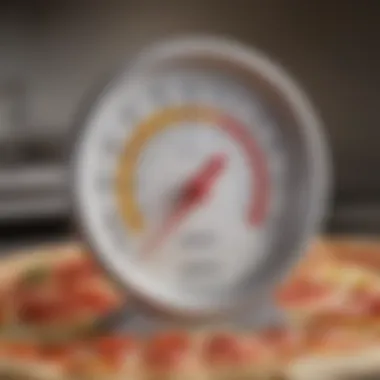
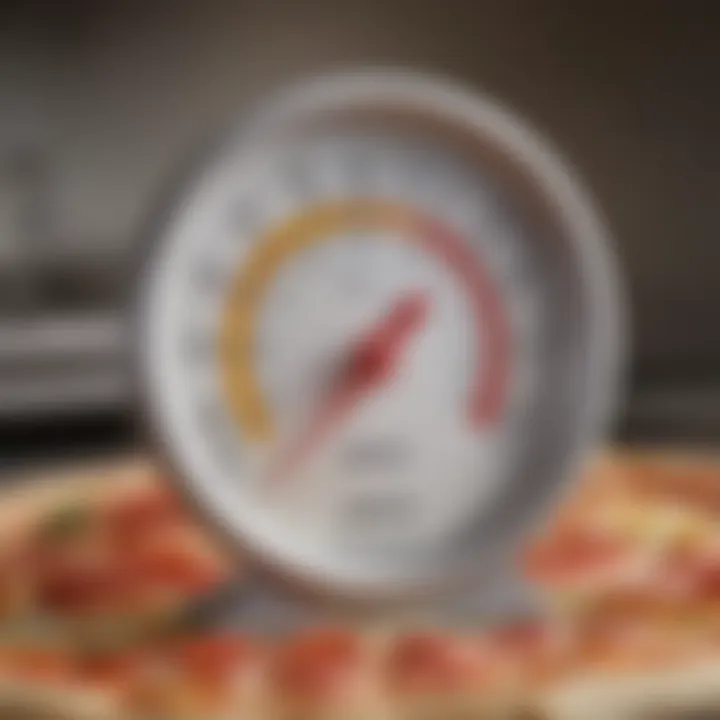
The duration required to reheat pizza can vary considerably based on several factors, such as the type of oven, the thickness of the crust, and the toppings used. A general rule of thumb is to heat leftover pizza for about 10 to 15 minutes in a preheated oven set at 375°F (190°C). However, this is just a starting point; the nuances of your pizza may alter this guideline. For instance, thicker crusts or pizzas with loads of toppings might need a bit more time, while a simple margarita could be ready in less.
To avoid undercooking or overcooking, it might help to start by checking the pizza after about 8 minutes. If it looks slightly heated but lifeless, give it a few more minutes. One way to gauge readiness is to keep an eye on the cheese – it should be bubbling and starting to brown.
Recognizing Readiness by Sight and Smell
The art of reheating pizza is also a sensory journey. Relying solely on a timer may lead you astray. Instead, familiarize yourself with key indicators that suggest your pizza is ready.
- Visual Cues: Look for the cheese to be melted and possibly a bit bubbly. If your toppings seem to be giving off a delightful shine, that's your signal that they’re warming up nicely.
- Aromatic Signals: The scent of cheese melting and spices releasing should waft through your kitchen, enticing you well before the pizza has cooled down. The smell can serve as your aromatic alarm.
- Crispiness Factor: A well-heated pizza should have a slight crisp to the bottom. A simple way to check this is to gently lift a slice with a spatula – if it holds its shape without flopping, you're likely on the right track.
"Timing is everything, especially when it comes to reheating pizza! Watch the cheese and let the aroma guide your way to pizza perfection."
Understanding how long to heat pizza and recognizing its readiness by sight and smell can significantly elevate your reheating game. It’s not just about warmth; it’s about reviving that wonderful first bite that made the pizza special in the first place. So next time you find a slice waiting in your fridge, remember this as your guide to giving it a glorious second act.
Enhancing the Flavor Profile
To truly savor every bit of reheated pizza, it’s essential to amp up the flavor profile. Leftover pizza doesn’t need to fall flat; instead, it can be a canvas for culinary imagination. The right enhancements can breathe new life into a slice that might otherwise be a pale shadow of its former self. Here’s how to turn a three-day-old pizza into a masterpiece.
Adding Fresh Ingredients
One way to enhance the flavor is by adding fresh ingredients. Think of it as giving the pizza a second chance to shine. Fresh herbs, vibrant vegetables, and even a drizzle of high-quality oil can really uplift the flavors. For instance, sprinkling some fresh basil or arugula on a slice after it's heated can bring a burst of freshness that contrasts well with the richness of the cheese.
Consider these options for fresh ingredients:
- Vegetable Toppings: Quick-cooked bell peppers, mushrooms, or spinach can add color and crunch.
- Herbs: A sprinkle of fresh parsley or dill can introduce a bright note that cuts through the heaviness of cheese.
- Oils: A light drizzle of flavored olive oil or a touch of balsamic glaze can elevate the overall experience due to their aromatic qualities.
Fresh ingredients not only amplify the taste but also provide a visual appeal that can make you appreciate that reheated pizza more. There's something rewarding about pouring a bit of passion into leftover food and transforming it into something spectacular.
Experimenting with Cheese and Herbs
While pizza typically comes topped with cheese, there’s always room for experimentation. Trying different cheeses or combining them with herbs allows you to redefine the taste profile of your reheated pizza. Why stick to the standard mozzarella when you can spice things up?
Here are a few ideas to explore:
- Cheese Variations: Experiment with provolone for a savory kick, or add a sprinkle of gorgonzola for a touch of sharpness.
- Herbs: Mixing dried oregano or thyme into your cheese can lead to a depth of flavor that elevates the sensation.
Moreover, adding cheese before reheating can create an irresistible layer of melty goodness that integrates beautifully with whatever toppings you have.
"The art of adding ingredients is not just to fill the pizza; it’s to create a symphony of flavors that dance on your palate."
Avoiding Common Mistakes
Reheating pizza may seem straightforward, but even the most experienced cooks can stumble on common pitfalls. Understanding these mistakes is crucial to elevating leftover pizza to a delightful meal, rather than a bland disappointment. Avoiding common mistakes not only saves time but also preserves the integrity of flavors and textures that make pizza so beloved. Whether it’s breakfast after a late-night indulgence or a quick dinner solution, the goal remains: to enjoy pizza pretty much as it was intended.
Overheating and Dryness Control
One of the cardinal errors people make is cranking up the oven temperature too high. Sure, we all want that pizza hot again, but blasting it at high degrees can turn your slice into a crispy, overcooked shadow of its former self. Here's the deal: when pizza is reheated too fiercely, especially the cheese and toppings, you risk losing moisture and inviting dryness.
To strike a balance, preheating the oven to around 375°F (190°C) is usually just right. This allows for a gentler warming that helps keep the crust a bit crunchy without transforming it into a desiccated disaster. If you've got a convection oven, that would work wonders. Just remember to keep an eye on it but avoid leaving it unattended for too long.
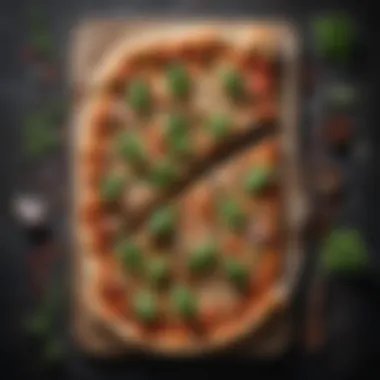

- Place the pizza on a baking sheet covered with a bit of foil to help retain moisture.
- Alternatively, a cast-iron skillet can be an excellent vessel for reheating; just make sure you don’t let it sit there for ages.
"Too much heat can be as bad as no heat at all; find your sweet spot, and you’ll savor that deliciousness once more."
Preventing Soggy Crusts
A soggy crust can be what nightmares are made of for pizza lovers. One might think a microwave is the quickest fix, but trust me, it often leads to an unfortunate sog fest. The key is in managing the moisture levels during reheating.
Here are some tips to help keep crusts crispy:
- Avoid Enclosing the Pizza In Foil: While wrapping the pizza in aluminum foil seems like a good idea to trap heat, it actually mists the crust, resulting in a rubbery texture. If you want to use foil, leave it open to the air on the top part only.
- Use a Pizza Stone: If you happen to have one, preheating a pizza stone can be almost magical. It absorbs moisture and radiates heat efficiently, helping the base regain its former crispness.
- Elevate the Pizza: Instead of placing pizza directly on the baking tray, try putting it on an oven rack. This allows hot air to flow underneath, aiding crispness while discouraging steam development.
Alternative Techniques
Reheating pizza isn't just about throwing a slice in an oven and waiting for it to get hot; it’s about bringing back the delightful taste and texture that made it so enjoyable in the first place. While the oven is a classic choice, there are alternative methods that can achieve the same delightful results while offering unique advantages. Understanding these techniques can aid in achieving that coveted crispy texture, which is often lost in traditional reheating. Exploring various methods empowers the home chef to restore leftovers without compromising flavor and satisfaction.
Skillet Method for Crispiness
One standout technique for reheating pizza while retaining its former glory is using a skillet. This method might seem unconventional, but it’s a secret weapon for many pizza aficionados. The magic happens on the stovetop—simply place your pizza slice in a preheated skillet over medium heat. Here’s how it works:
- Add a little water: Once the pizza is in the skillet, pour a teaspoon or so of water into the pan, then immediately cover it with a lid. This creates steam and helps melt the cheese while keeping the crust crispy.
- Watch the heat: Keep an eye on it! The crust will crisp up nicely, usually within 5 to 8 minutes. Adjust the heat as necessary to prevent burning.
- Serve promptly: Remove the lid just before serving for that ultimate melty goodness. Enjoying pizza this way brings back that fresh-from-the-oven feel.
Many people find that this method doesn’t just preserve the texture but enhances it, especially for those thick-crust varieties. It’s a simple, effective way to savor your favorite slices.
Using a Pizza Stone
If you’re looking for that pizzeria-style enchantment at home, then a pizza stone is your best friend. By mimicking the conditions of a traditional pizza oven, it does wonders for achieving the right balance of crispy yet moist pizza slices. Here’s the lowdown on using a pizza stone for reheating:
- Preheat the stone: Place the pizza stone in the oven as it heats up. It’s crucial to let the stone warm for about 30 minutes at a high temperature, typically around 450°F (232°C) or even higher, depending on thickness.
- Placement matters: Once heated, slide your pizza onto the pizza stone. The hot surface sears the bottom of the crust, ensuring a satisfying crunch.
- Time it right: Give it around 10 minutes, but keep checking. The goal is to melt the cheese and warm the toppings without losing the integrity of the crust.
Adopting a pizza stone not only elevates leftover pizza but rekindles the love for that home-cooked experience. The unique heat distribution helps in achieving a crispier bottom while maintaining the toppings' integrity.
Remember: Each technique offers its flavor enhancements. Experiment to find which suits your taste preferences best.
These methods may require a little more effort compared to traditional reheating, but for the love of pizza, they are well worth it. By dabbling with alternative techniques like skillet reheating and utilizing a pizza stone, one can vastly improve the leftover pizza experience.
Culmination: The Art of Perfect Pizza Reheating
In the world of culinary arts, reheating pizza might seem like a straightforward job, yet it requires a touch of expertise and understanding of underlying principles. This article sought to illuminate the intricate process of bringing leftover slices back to life with vibrancy and taste. Perfect pizza reheating is not merely a task; it transforms leftover bites into a delightful experience that rivals that first, steaming hot slice. Look at it this way: pizza is an exception among leftovers—when done right, it can recapture its original glory rather than becoming a sad shadow of its former self.
Understanding the complexities involved in reheating paves the way for success. From grasping the science behind ingredient reactions to choosing optimal heat settings, awareness plays a pivotal role in achieving satisfying results. For instance, a pizza crust that is crispy and inviting can elevate the entire dining experience. Thus, the techniques discussed in this article equip readers to navigate the reheating process like skilled artisans, ready to create a meal that brings joy.
Recap of Essential Points
A brief revisit of the main topics reveals the layered nature of this art:
- The Chemistry of Heating: Knowing how heat affects different ingredients is vital in ensuring that flavors and textures are maximized.
- Optimal Heating Techniques: Techniques such as preheating the oven and choosing between direct baking on a rack or using foil distinctly influence the outcome.
- Timing Considerations: Mastering how long to heat the pizza while keeping an eye on visual cues ensures that each slice emerges golden and delicious.
- Enhancing the Flavor Profile: Simple additions of fresh ingredients or a sprinkle of herbs can turn an ordinary reheated pizza into something extraordinary.
- Avoiding Common Mistakes: Understanding potential pitfalls—in particular, controlling overheating for dryness and preventing soggy crusts—can significantly affect the quality of the reheated pizza.
- Alternative Techniques: Exploring methods like the skillet approach or pizza stone usage can elevate your pizza experience further.
Empowering Culinary Confidence
Now that the nitty-gritty has been laid bare, it’s time to walk into the kitchen with renewed confidence. Armed with knowledge, anyone can tackle leftover pizza like a seasoned chef. Each reheating session can embody exploration; experimenting with different techniques and flavor enhancements can yield varied and exciting results.
Ultimately, perfecting the art of heating pizza means enjoying what once was discarded. Whether it’s a slice of yesterday’s pepperoni or a cold veggie delight, there’s always potential for greatness. The next time you face a cold pizza, remember the insights shared herein. Embrace the journey, savor each crunchy bite, and relish the satisfaction of leftover mastery.
"Leftovers, when treated right, have the magic to bring comfort and joy with every bite."
Armed with this guide, anyone can feel like a pizza aficionado ready to take on the canvas of culinary creativity.







